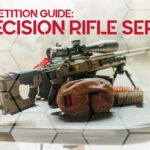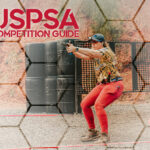
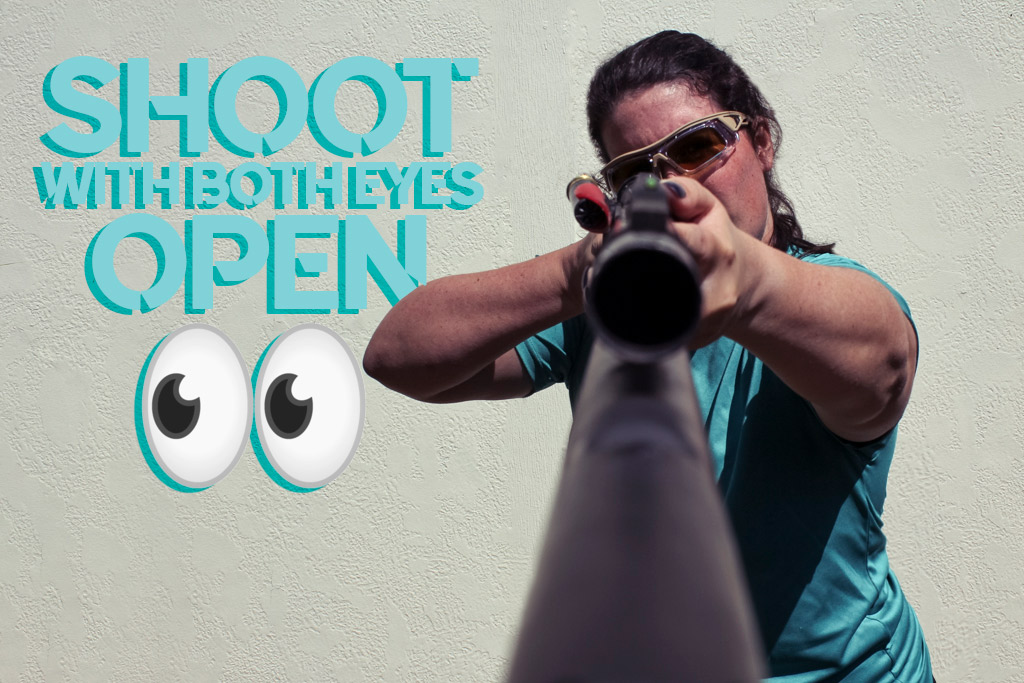
Guest Writer: Kenzie Fitzpatrick
Learning how to shoot with both eyes open is a lot easier to do when you’re getting started, versus trying to learn it later. This concept applies to shooting any kind of firearm, whether it’s a shotgun, rifle, or pistol. As always, follow the rules of firearm safety, specifically knowing your target and what’s beyond it. Keeping both eyes open is crucial to always make sure what’s beyond your target is clear.
Benefits Of Shooting With Both Eyes
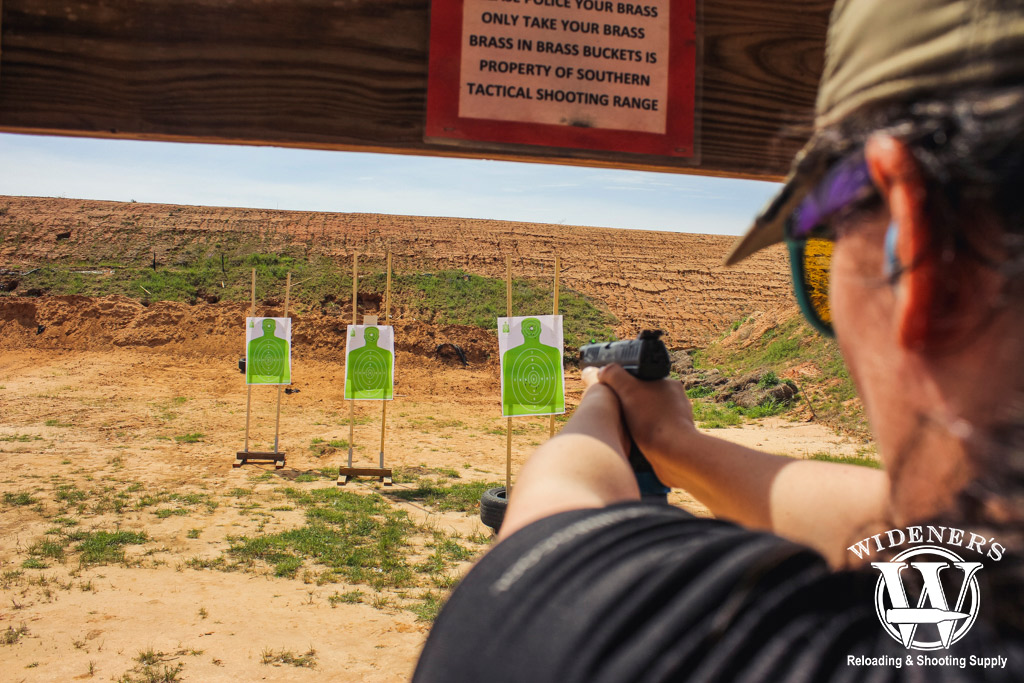
Once you’ve mastered shooting with both eyes open, you’ll be faster and more accurate with your weapon.
Why is shooting with both eyes open helpful in target shooting, competitive shooting, hunting, and more? There are several reasons, I’ll explain them for you below.
Peripheral Vision/Tunnel Vision
Whether you’re target shooting for fun or trying to lock onto a deer at a distance, having tunnel vision is never a good thing. Just like driving a car, we would never close one eye to focus on the road or what’s ahead. Peripheral views are crucial to seeing your targets, where you’re in relation to them, and what’s going on around you. This is also why choosing the right shooting glasses is important. You need a full field of view when firing a gun.
Seeing Your Shot
Seeing your target fall, or receive impact gives you a faster response time to move to the next shot or stop shooting. You’ll find it’s much more difficult to see your shot placement with one eye, rather than both. Even if you miss, having both eyes open gives you a better chance of seeing where the bullet ended up.
One of the most helpful things I did to improve my ability to shoot with both eyes open was to change the front sight on my pistol. I use a front sight that’s skinny enough to see my target in between my rear sights. This is extremely important for targets that are set at a farther distance such as 30-40 yards because a front sight that lines up with the rear sight perfectly edge to edge can cover the entire target at this distance. If your front sight is too thick, it leaves you no field of view of what you’re aiming at.
A plate rack target is a great example of why having both eyes open is important. If you have one eye shut, your dominant eye cannot be focused on the front sight, on the target, and on the other plates all at the same time. When you have both eyes open, this frees your dominant eye to focus on the front sight and your non-dominant eye to watch for targets that are still up. Using both eyes, you’ll not only be able to see your shot impact, but also the next target you’ll need to hit.
Hitting A Moving Target
Moving targets require a full field of vision for you to correctly aim your weapon. Depending on the distance and speed of your target, you’ll need both eyes to lead your shot. Animals are moving targets whether they are walking, running, or standing still (breathing, looking around). At any point in time, your target could change.
Remember the importance of knowing what’s beyond your target? While hunting, many things can happen. The animal could move, another animal or person could come into view in front or behind the target animal, or a tree could fall around you. You have to learn how to shoot with both eyes open to adapt to changes that happen quickly in your environment.
It’s also a lot easier to shoot swinging targets, drop turners, and other activated moving targets accurately when you have both eyes open. Your non-dominant eye should be watching the movement of the target and the timing for when your most accurate shot is available. Your dominant eye remains focused on the front sight for when your target comes into view and is ready to be shot at.
Understanding Target Aquisition
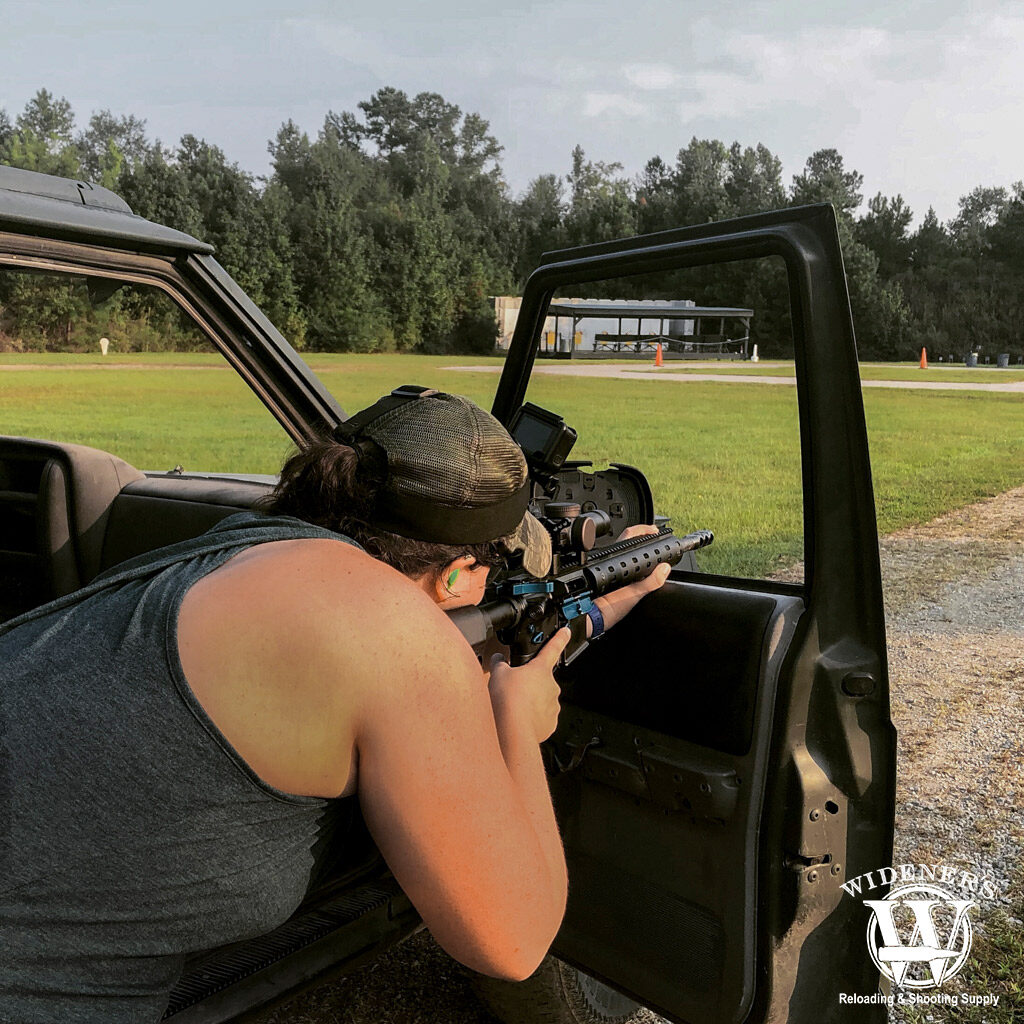
Using your dominant eye to select targets is slow and inefficient, use your non-dominate eye to find your next target.
Having both eyes open is helpful in finding your next target, especially when the targets are spread out. So which eye should you use to find targets while using an optic? If you’re looking through an optic, like a scope or a red dot, don’t search for your next target with your dominant eye.
Use your non-dominant eye to find the next target and move your gun to it. I’ve been guilty of slowly moving my rifle to find the next target through my scope with my dominant eye. Aligning targets with your dominant eye is extremely slow and inefficient. You can easily move past and miss a target this way.
Finding Balance
Go ahead, stand up. Put your arms out and raise your right leg, bending it at the knee. Now close your eyes. Do you feel the room moving? Now open one eye. Not much better? Now open both eyes? Do you see how much easier it is to balance on one leg with both eyes open? Depth perception, balance, and spatial orientation are all thrown off when you only have one eye open. The same thing happens to your equilibrium when you aim with only one eye.
It’s like trying to drive with one eye open. By closing one eye when you’re shooting, you’re losing a lot of controls you need to shoot with. Your depth perception comes from having a clear vision, which is why if you have ever had a prescription for glasses or contacts you know how much your vision is thrown off without it. Spatial orientation refers to the ability of an individual to regulate his or her body orientation and/or posture in relation to the surrounding environment. If you think about how often you are shooting in different positions, having an eye closed is dangerous to losing functions.
How To Shoot With Both Eyes Open
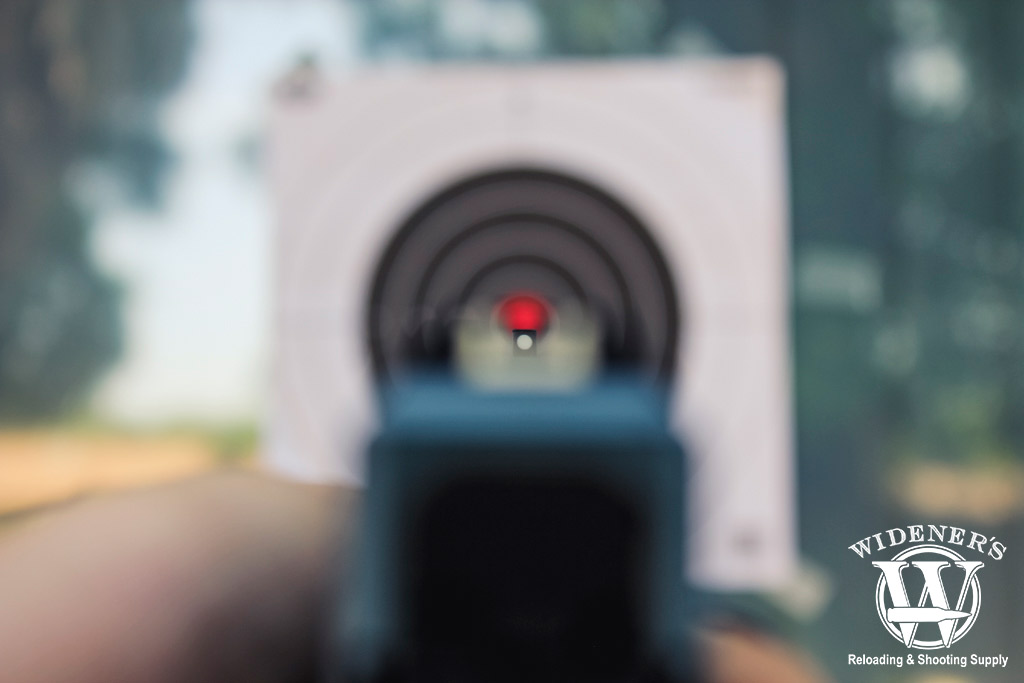
A great way to teach yourself to shoot with both eyes open is to practice with dry firing your weapon.
Dry Fire Practice
Before ever trying something new on the range, try it during dry fire practice first. If you struggle to shoot with both eyes open, dry firing is a great way to get yourself used to it. One of the best tools I’ve invested in is a dry fire kit for my home. Some targets are small, often half or third sized, but shaped like regular sized targets. The smaller target size is to give you the same view you’d have when they’re set at far distances.
Ready to practice dry fire? First, visually make sure your weapon is unloaded, then check it again. Safety is rule number one, so always double-check that your weapon is unloaded. Set up two targets at least 10 feet apart. With each firearm (pistol, rifle, shotgun) and optic type (iron sights, red dot, scope) practice sighting the targets with both eyes open. If you are worried about dry firing your weapon, you can always chamber a dummy round to protect the gun. Follow the list below and remember to be safe and have fun!
- Check and then re-check that your firearm chamber is clear and the weapon is not loaded.
- Set up your scaled targets (in a clutter-free area) at least 10 feet apart.
- Practice transitioning from one target to the other with both eyes open.
- Practice drawing, aiming and dry firing your weapon at the targets with both eyes open.
- Work on shooting drills and use a shot timer to improve your skills.
Seeing Double?
Should I be seeing double? It’s a common question I get from a lot of new shooters. The answer is yes! When you start learning how to shoot with both eyes open, you’ll notice you’ll see two sight pictures and sight alignments. Maintain focus on your front sight and your dominant eye will take over. Your non-dominant eye will follow suit and learn to support your shooting. As you continue to dry fire, practice with different guns and optics to get used to what it’ll look like.
Troubleshooting Ideas
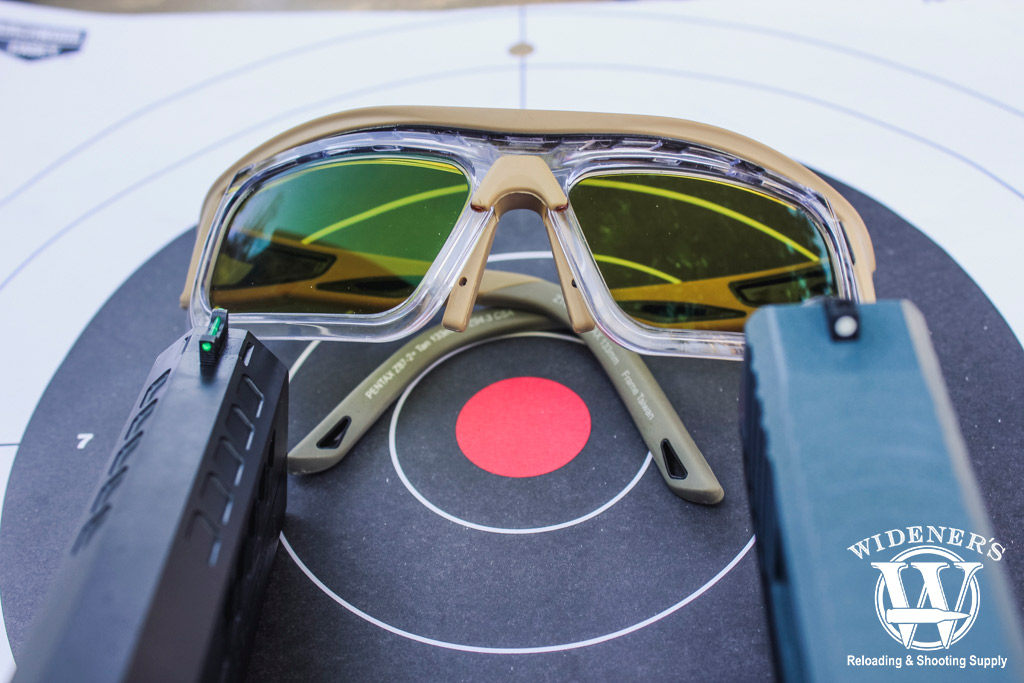
Don’t give up! It takes time to rewire your brain when you’re learning to shoot with both eyes open.
Have you tried shooting with both eyes open and you’re still having issues? Don’t worry, it happens! Grab your eye protection and some chapstick. I received this tip early on when I wanted to close my non-dominant eye. I smeared ChapStick on my left lens so my non-dominant eye would have a blurry view, but would remain open. Eventually, I could shoot without using ChapStick, but it rewired my brain to keep both eyes open when I was shooting. It jump-started the process of focusing only on my dominant eye.
Common Mistakes & Tips
You should never move the gun and follow it with your eyes. Your eyes determine where your sights on your gun go. Always move your eyes to the target and the gun will follow suit. The role your non-dominant eye has to play is finding the next target.
Are you still having trouble? Run a dry fire drill of starting out with your gun in a low ready position, your eyes locked on a target, and when you’re ready, bring the gun to the target exactly where your eyes are focused. Next, move your eyes to the next target, focus on where you want to shoot, and move the gun to where your eyes are. Get used to finding targets with both eyes open and practice this at the range for live fire when you’re ready.
If you’re a newer shooter, the challenge to shoot with both eyes open is a lot easier when you’re starting out. If you’re like me and having to reteach yourself, dry fire and working drills to improve one thing at a time is where I made the most improvement. When you go to the range and train with live ammo, your practice will pay off. Keep at it and eventually, your body will have learned on its own to leave both eyes open when you’re shooting.


